Part 74: Turn 11 - January/February 43: Die Ghostenbuesters

Happy New Year! 1942 was quite underwhelming on the German side, and quite soon it will be the Soviets who will have the opportunity to strike at the land of their enemies. But not just yet, Greater Germany is still many miles away, and the Axis will receive some quite potent tools both for offence and defence this year (as will the Soviets, naturally). We'll see if that is enough to keep the red tide at bay, or if the defence of the Reich will have to commence early.
Housekeeping
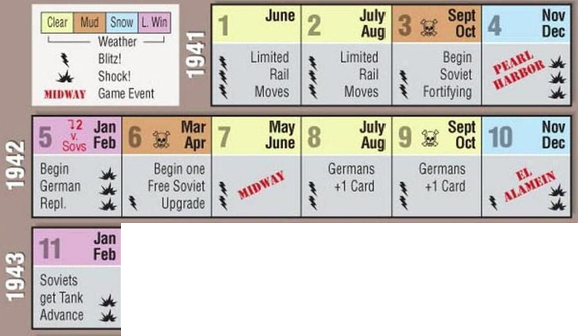
The Turn's Event does seem to favour the Soviet side of the game. The Soviets get Tank Advance, meaning that their Tank Armies may now advance as far as the German Panzers upon a successful combat. There is another bonus here, however, which is not listed on the board: Soviet Tank Armies may now stack with other units (except Fortresses). Two Tank Armies are a valid stack, as are a Tank Army and an Infantry Front, or a Shock Front, but two Infantry Fronts or a Tank Army and a Fort are not. This should make Soviet offence far more powerful than it was up until now.
The weather this time is Long Winter.
- The Germans use the Soviet CRT for all their attacks.
- There is no Armour Bonus in combat.
- No multi-hex advance after combat. Attacking units can only enter the defender's hex and can go no further.
- The Axis can only use three Target markers in their Combat Phase. The Soviets can use all five.
- Movement is capped at 4 MPs for both sides.
- All non-Finnish attacks against Soviet units in the USSR suffer a -1 shift penalty.
- Rivers are still frozen and do not offer defensive shifts.

We've finally caught up with the High Tide token. This thing is directly tied into the new Axis victory condition: the Operational Victory. I will go into detail on what this entails next turn, but for now the thing will stack nicely with the German VP marker and will follow it wherever it goes. It is obviously good for the Axis to have it as high as possible at the beginning of next turn, because wherever it gets this turn, it stays.
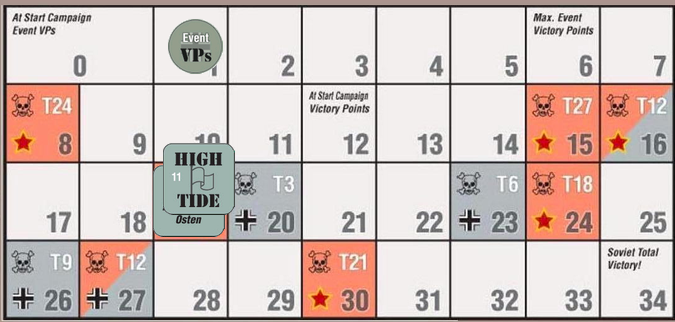
Although it's not particularly high this turn.

The Axis have 1 card in hand. They draw 4.

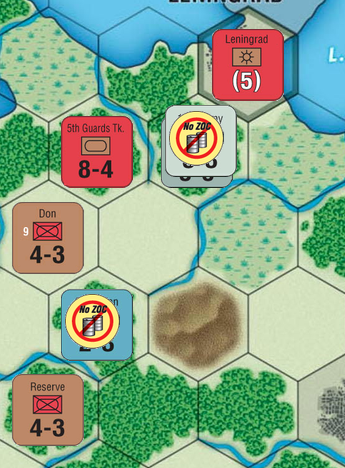
Whatever is left of Army Group Entrenched Mongoose is put out of supply. The tidings are grim for the Germans, to say the least.
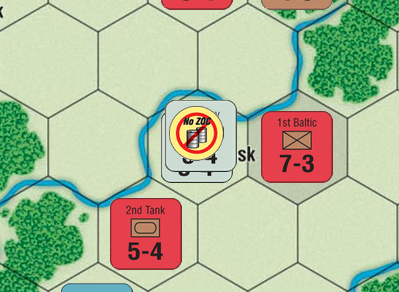
Similarly, the surprise attack of Army Group Centre is also cut off, but in this case there is a fair chance of a breakout.

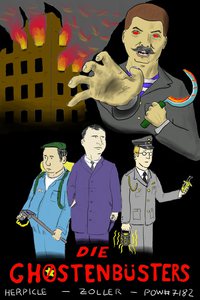
German propaganda machine is on high alert, seeking to motivate the men of the Vaterland to join in the Wehrmacht in the hour of need. Cinematographers are also part of the war effort, claims Goebbels, and as such they will be expected to make a contribution befitting their stature. "Die Ghostenbuesters" by Herr Decoy von Badger takes cinemas by storm, convincing thousands to sign up for the Front.

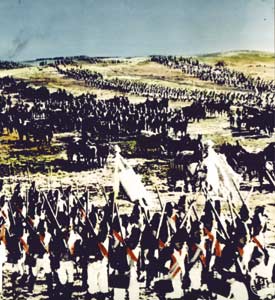
During the war, the Germans made several propaganda films to strengthen the resolve of their people and convince them to continue the war until death or victory. The last - and probably the most perplexing - of those works was Kolberg, shot in 1943-44 and finished in 1945 by Veit Harlan. The story is a retelling of the heroic defence of the fortress of Kolberg (today Kolobrzeg, Poland) from Napoleon's armies in 1806. The leaders of the defenders, count von Gneisenau and mayor Nettelbeck, have to win over the defeatist elites, who prepare to surrender in the wake of Napoleon's victories in Germany, and bring back hope to the disheartened people of the city to save it from the overwhelming French force. Naturally, they succeed, and the film ends with Bonaparte's defeat in the Battle of Leipzig.
What is quite astounding is that the extras for the film were soldiers taken straight from the front lines. The shooting was several months long, after which they were returned to their units. It was the last German wartime film, and as such it was appropriately grandiose: 100 railway wagons of salt were used instead of snow for winter scenes, and the entire production cost 8 million marks. Kolberg had few screenings, most notably in temporary cinemas in Berlin, but its real raison d'etre was the besieged coastal fortress of La Rochelle on France's Atlantic coast. The place had long been separated from the German forces by a sea of American and British troops, but that didn't prevent the Luftwaffe from airdropping a copy of the tape in order to bolster the defenders' morale. La Rochelle held until the German surrender in May 1945.
The Axis may now spend two cards per unit to flip any of their reduced-strength units that are in overland supply back to full strength. The units eligible are: 1st Panzer, 2nd Army, 6th Army and 17th Army.

The Axis may also spend cards to retrieve their units from the Destroyed Units Box. These units have to be placed in any City hex in Greater Germany or on a Kampfgruppe (which will eliminate the Kampfgruppe and return it to the Turn Track).
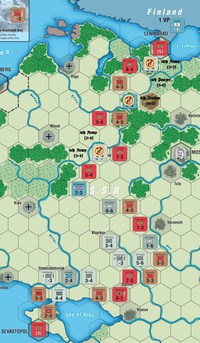
I need decisions on discards and placement from Logicone. The deadline for them is Thursday, May 8, 7 PM GMT.